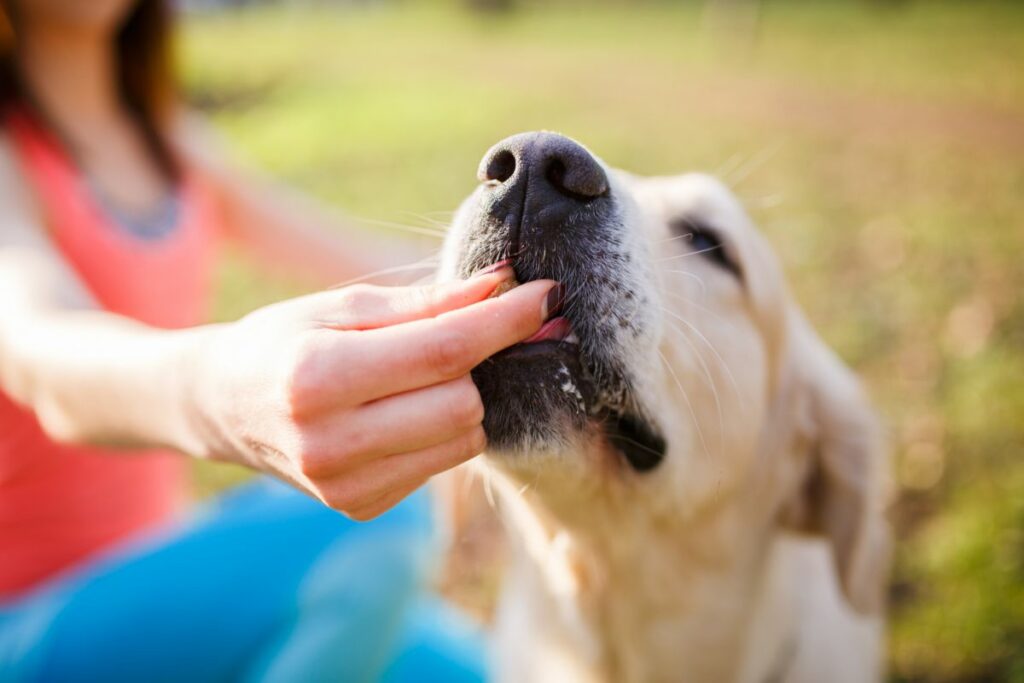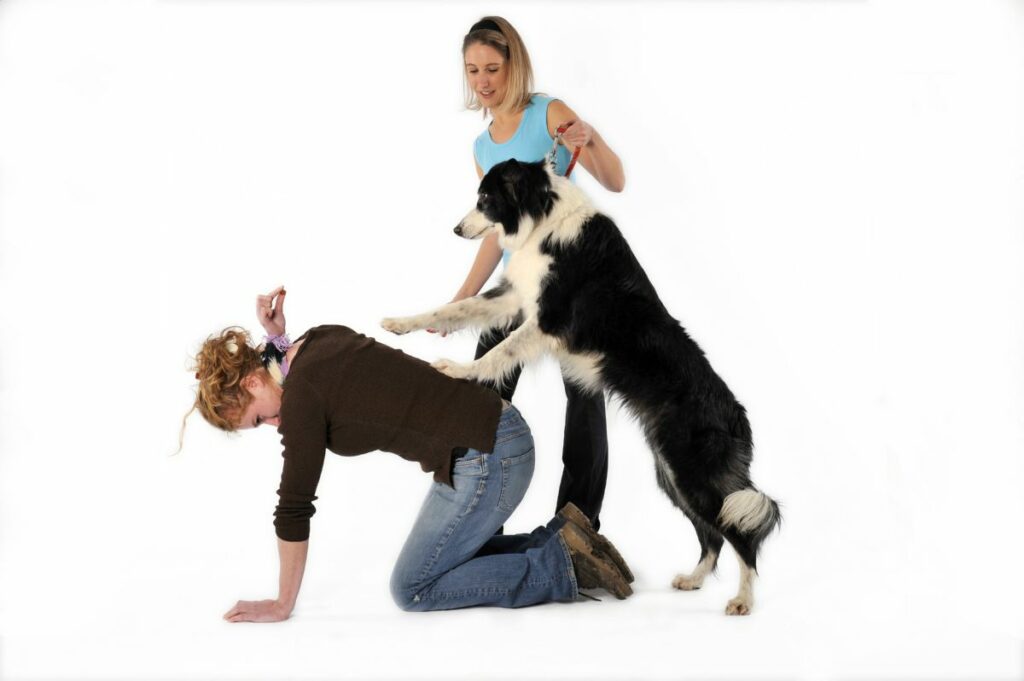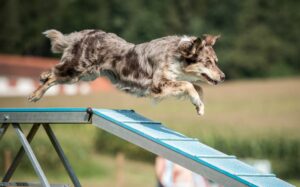If you want to take training your dog to the next level, try teaching your dog to jump on your back. This impressive-looking trick is not only a great mental and physical exercise for your dog, but it is also a great opportunity to strengthen the bond between you and your furry friend. One of the most effective ways to train your dog is with the use of clicker training, which is the method we used in this step-by-step explanation of how to train your dog to jump on your back. If you are not yet familiar with clicker training, make sure you read the section about clicker training before you scroll down to step one.
IMPORTANT: Please do not perform this trick when your dog is younger than 1 year old or if your dog is suffering from or has a history of any joint or muscle problems. When your dog jumps higher than its elbows, the joints will experience a high amount of pressure. This can be damaging to developing joints and to dogs who are prone to injuries.
Clicker Training: The Basics
Clicker training is a very effective method to train your dog and is great to incorporate when teaching your dog how to jump on your back. Your dog will easily recognize the consistent sound of the clicker which makes it an obvious cue for them to know they’ve done something right.
When your dog demonstrates the desired behavior, press on the clicker and reward them with a treat. This way, your dog knows he will get rewards upon hearing the clicker sound. The consistent, easy-to-recognize sound combined with the reward make clicker training an effective positive reinforcement training method which will assist in training your dog to perform various tricks and to adopt new behaviors.
Guide your dog onto your back with an object
Level your back with an object that your dog can stand on so it is easy for your dog to transition onto your back. Use for example your couch or bed. If your dog is not allowed onto your furniture, you can pick any stable and safe object which is of equal height to your back when you stand on your knees and hands. With a treat, lure your dog from the object onto your back. Once your dog puts one or two paws on your back, immediately click and give your dog the treat. Repeat this until your dog understands they have to put their paws on your back before they get the treat.
Reward them
Once your dog is familiar with standing on your back with two paws, you can ask a bit more from your dog by rewarding them when they stand on your back with three or four paws. Make sure you are patient with your dog here as they need time to find their balance on your back. This can be easy for some dogs, but difficult for others.
Don’t ask too much from your dog and go with their tempo. Keep repeating this step until it is easy for your dog to stand on your back with four paws. Make sure to click and reward each time they stand on your back with four paws. When your dog shows you that they fully understand the behavior you are asking from them, you are ready to move to the next step.

Guide your dog onto your back without an object
Move away from the object while remaining in the same posture. Ask your dog to stand on your back again and reward immediately when they put their paws on your back, even if they only put just one or two paws. Keep clicking and rewarding them for their good attempts until they are comfortable putting all their paws onto your back. This takes time and loads of patience. Our backs aren’t flat and stable surfaces and your dog will likely need many attempts to find its balance. If your dog falls off your back during the training, be continuous not to make a big deal out of it and simply ignore what happened.
Reward them for their good attempt and try again. In case your dog slides off your back, their nails might leave scratches on your back or cause other injuries. To prevent this, you can wrap a towel or blanket around your back. Some dogs might not feel comfortable putting more than one or two paws on your back. If this is the case, try and lure your dog onto a single standing object of similar height, like a stool, chair or table, and reward them. This gives your dog a cue about the behavior you want them to demonstrate. Gently connect this behavior with placing all four paws on your back and progress to standing on your back with all paws.
Increase the height
Once this goes well and your dog feels comfortable standing on your back with all four paws, you can slowly start to increase the height. Be mindful not to go too high too quickly. You have to make sure your dog feels confident at each level before you can increase the height. Make sure to teach your dog to jump on your back from both sides so they will be able to perform the trick well from both ways.
The goal of the trick is to have your dog jump on your back when both legs are straight and your back is arched forward. Be aware to bend from your hip crease instead of your lower back to prevent any back injuries. Once your dog can jump comfortably on your back, you are ready to show off your newly learned trick to your friends and family.

FAQ:
1. How long does it take to train your dog to jump on your back?
How long it takes your dog to learn a new trick depends on their trainability. This can vary depending on several factors including their breed, personality traits and health conditions. It is important to keep in mind that it doesn’t matter how long it takes your furry friend to master this trick. Make sure you go at their pace and keep rewarding them for their good attempts. With enough patience, your dog will be able to perform this trick.
2. What should I do if my dog does not transition from the object on my back?
Make sure you have a treat in your hand and lure them on your back by sticking your hand out far enough so that your dog will have to put a paw on your leg to get the treat. Even if your dog touches your back with one paw for only one second, click and reward them immediately. Eventually, your dog will understand that you want them to put their paws on your back and will feel more comfortable progressing. Keep clicking and rewarding them for their good attempts.
3. Does this trick promote unwanted jumping behavior?
Jumping onto people is usually seen as unwanted behavior from dogs. Though this trick requires your dog to jump on you, there is no need to worry about your dog jumping on you unwantedly. Through the step-by-step plan shown above, your dog will understand that they are only allowed to jump on your back.







